My note taking setup
Kev asked how we handle our notes. I couldn't help myself. Here's a quick overview of how I create and manage notes.
about how we take notes, I'm happy to answer. I'm taking this question as an opportunity to write a little about my setup, without getting too technical. I'll be writing about the technology in several posts – and I already did.
Even though I'm writing very explicitly about Obsidian here, the basic principles can be applied to any other app. Obsidian simply serves as a good example.
I have two important rules for note-taking without which it won't work:
- The setup has to stay out of my way; everything has to be as simple as possible.
- It shouldn't be so simple that I immediately forget my note after saving it.
The heart of my setup still is Obsidian. I've equipped Obsidian with a few plugins, but I'm cautious not to fall into the optimization trap. I want to use Obsidian for writing, not for tinkering with it. Plugins, yes, but only if they are really useful and I don't have to deal with them all the time.
My Obsidian setup serves two purposes:
- Writing, publishing, managing, and scheduling posts
- Quickly capturing and linking notes
It's not meant to do anything more. No project planning, no to-do lists, and the like. I've played that game before, and it always led me to stop using Obsidian. I know that many users build large setups and try to do everything with them (see also Notion and the like). However, I'm a big fan of separation of concerns. The "buy concert ticket" to-do has nothing to do with my writing.
There is one exception, and that is my Content Plan, which is a read-only view which is fed by the metadata of the texts. It simply serves to give me a better overview, since I now write for three blogs and a podcast.
The structure in Obsidian results from all of this:
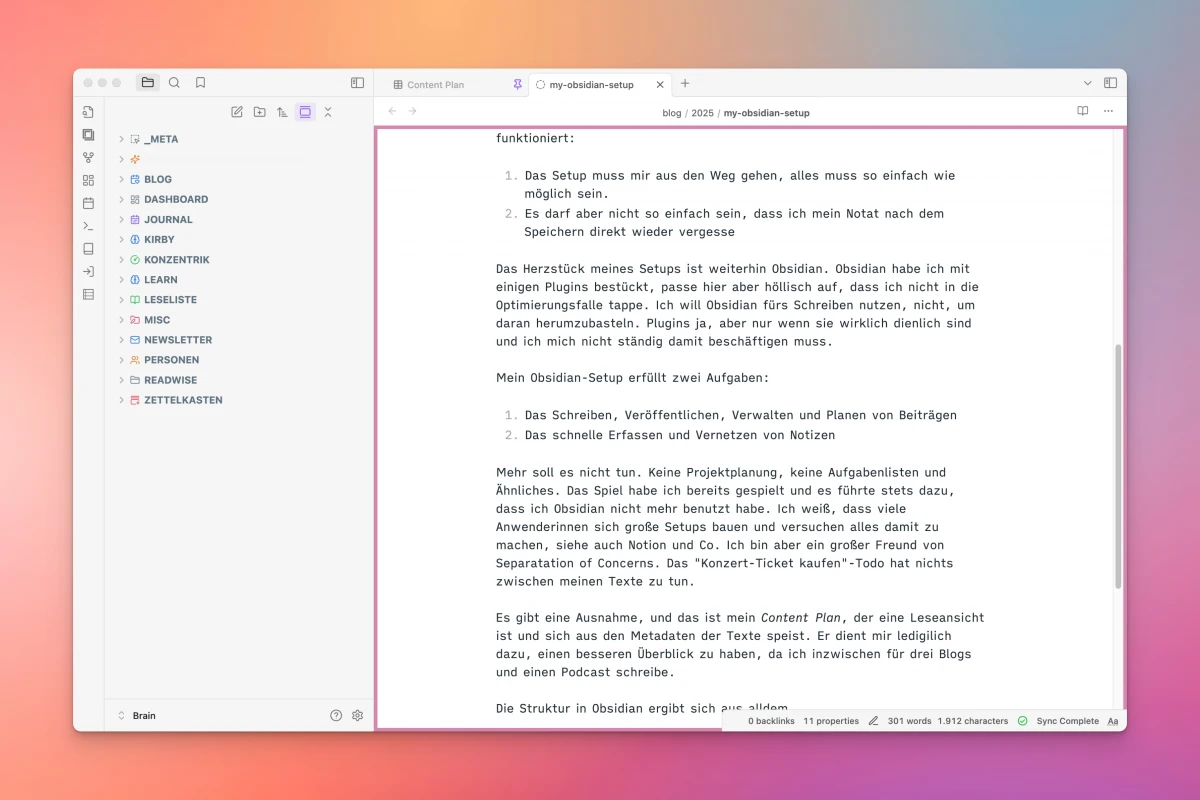
The structure of the sidebar is largely derived from the structure of my website. With a few exceptions:
- META contains my templates and clippings
- KONZENTRIK contains posts from other blogs and podcasts
- JOURNAL contains daily notes (more on that later)
- PERSONEN contains, for example, authors of books I write about
- ZETTELKASTEN contains my notes
My Obsidian-Kirby-Sync ensures that all text on my website is always synchronized with Obsidian. I won't go into that in detail here; I've already described it in detail.
Notes
When taking notes, it's important to me that I don't have to worry about where I'm creating the note or whether I need any metadata. I want to be able to write something quickly and then forget about it.
Firstly, I can quickly create a note in the Zettelkasten (note box). This is usually a longer note, meaning something I do consciously. There's no automatic process for this.
But there's the Journal folder, and there I can create a daily note with one click. These daily notes serve as a repository for all the notes and references that pop up that day.
During the day, everything ends up in this daily note, and at the end of the day (or during the week), I consider whether to separate individual notes and move them to the Zettelkasten, for example.
I have several ways to create a note. Directly in Obsidian, of course. There's a shortcut in the sidebar that jumps directly to the daily note. Most of the time, though, I don't even want to have to bring Obsidian into focus.
For short notes, I use a Raycast shortcut that lets me append a line to the daily note. To do so, I simply press SUPER+N and Raycast opens:
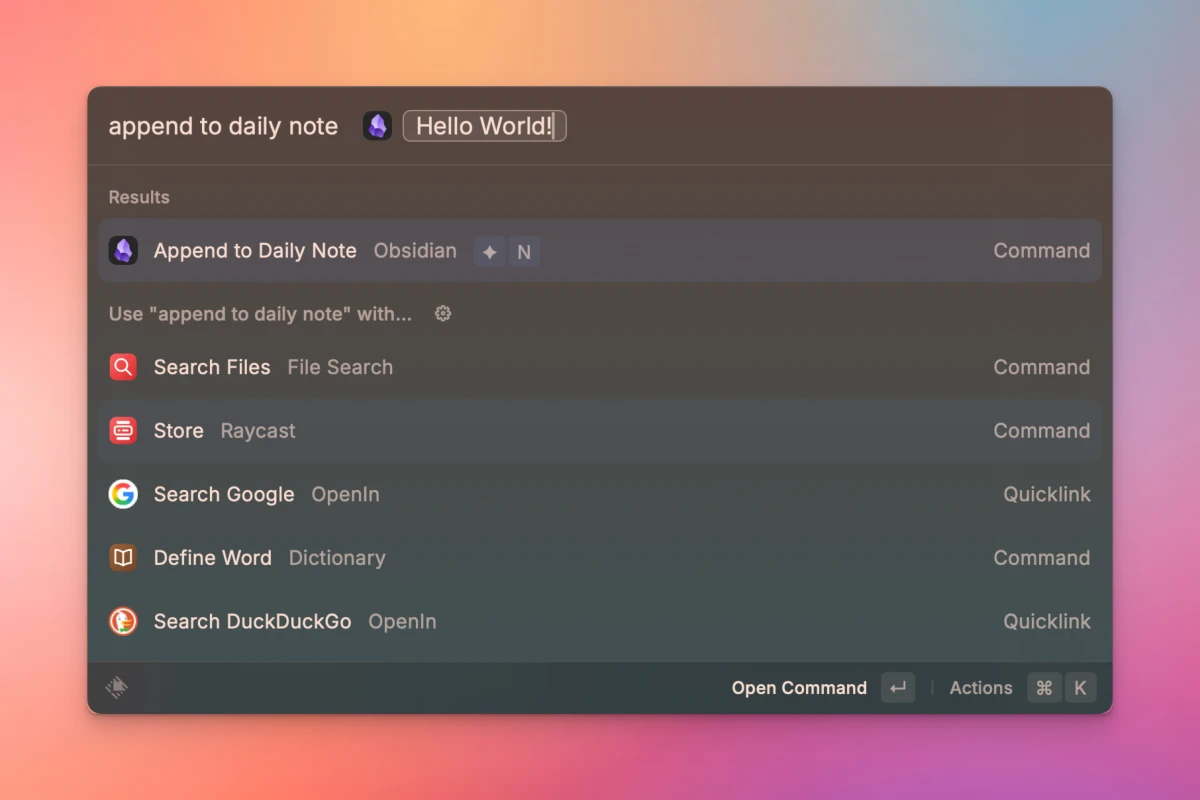
Collecting from external Sources
A key part of my setup is remembering references. I read many websites, especially blogs, in Feedbin. From there, I can share posts. I've created a few shortcuts here:
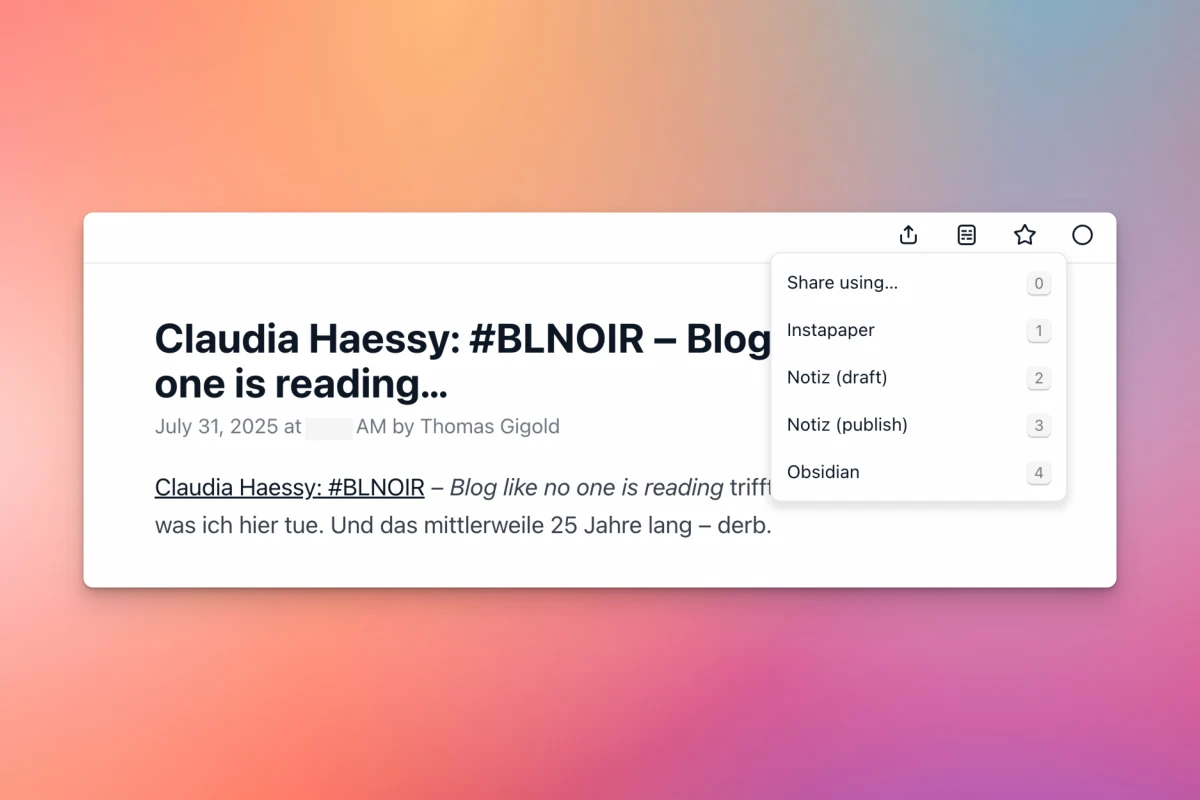
So, in Feedbin, I just need to press 4 and the post lands in the daily note, including some metadata:
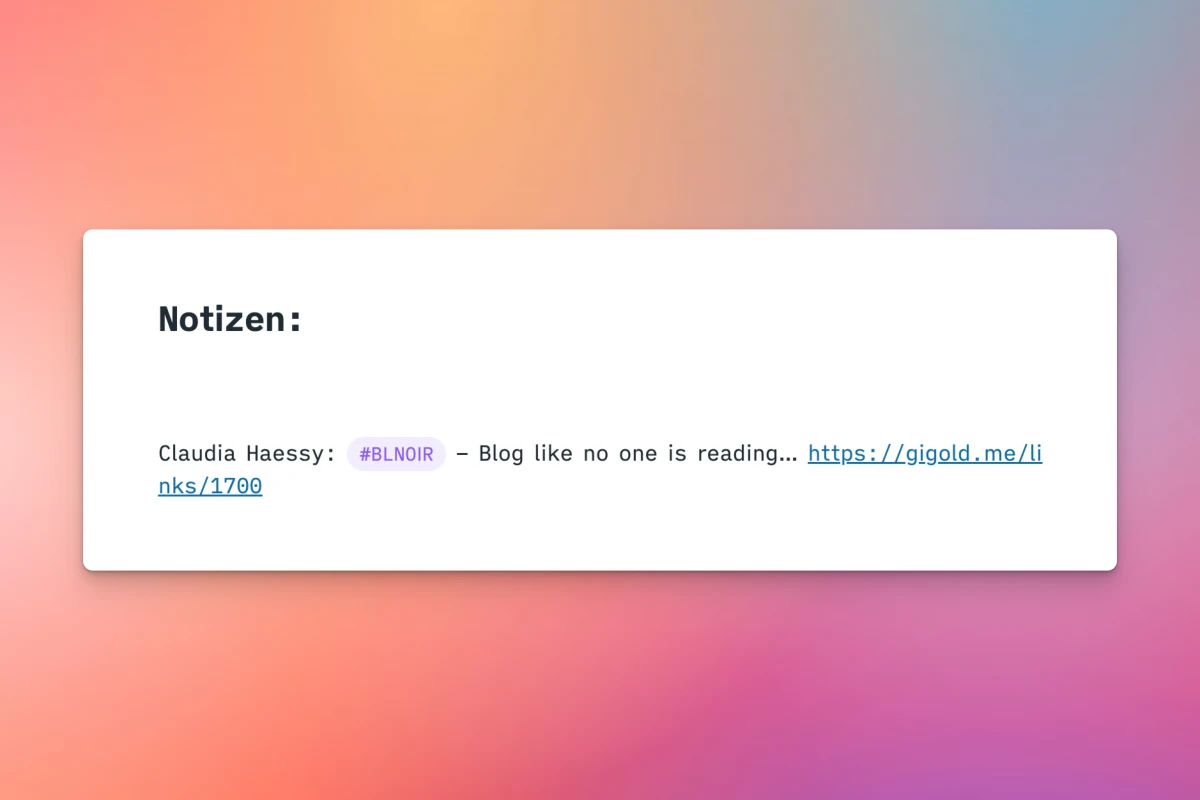
Now, I don't exclusively read in Feedbin, but I still want to quickly "save" a page as a note. To do this, I use the Obsidian Web Clipper. It's a core plugin that comes with a browser extension.
I can highlight part of the text on a web page and click on the extension:
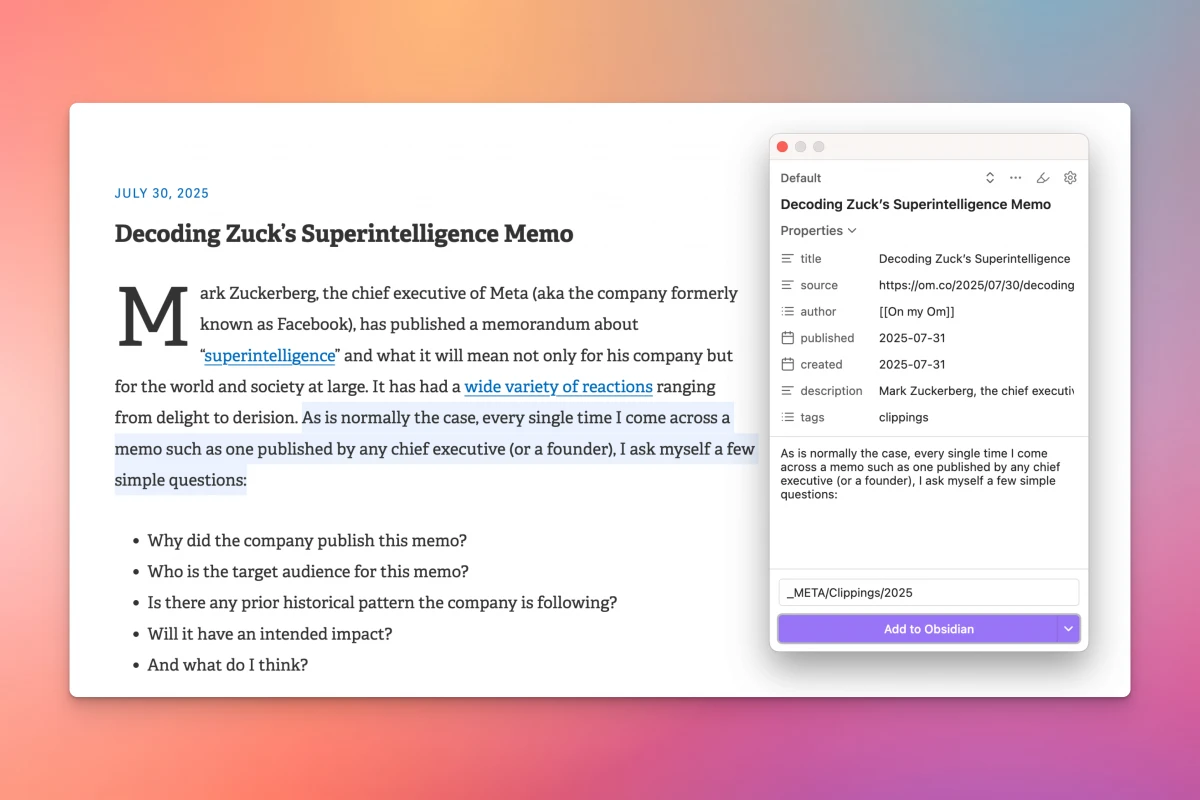
I could now make changes in the small popup. I could even integrate an "AI" that summarizes the text for me or something similar. However, this works very poorly (probably due to my local Ollama setup) and is more annoying than helpful. If I don't select anything in the text, the entire text is transferred.
Clicking Add to Obsidian creates a completely new note in my META folder in Obsidian:
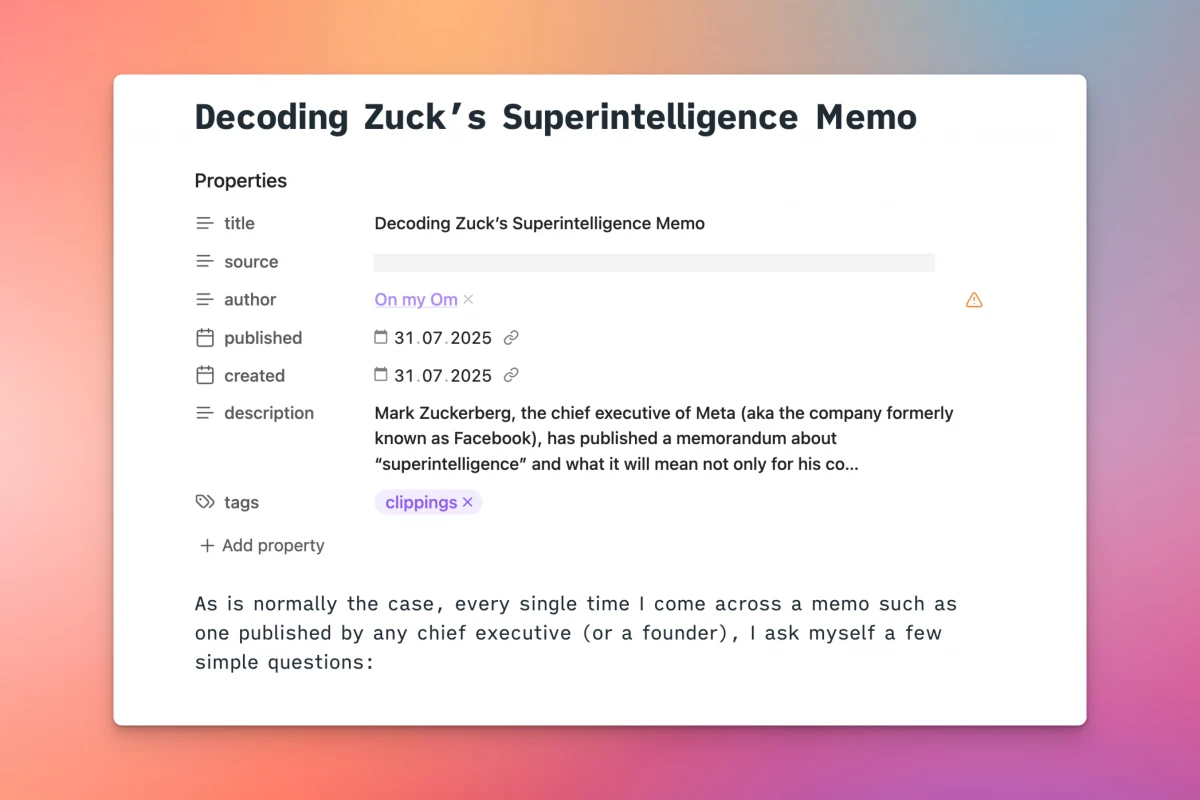
(By the way, my screenshot tool thought it had to censor the URL, but I realized it too late.)
So now this clipping is slumbering somewhere under META, and that's of little use to me for now. I don't want to have to deal with it, but I also don't want to forget it.
My daily note has a data view. These are basically dynamic views that you can populate with queries about your own notes:
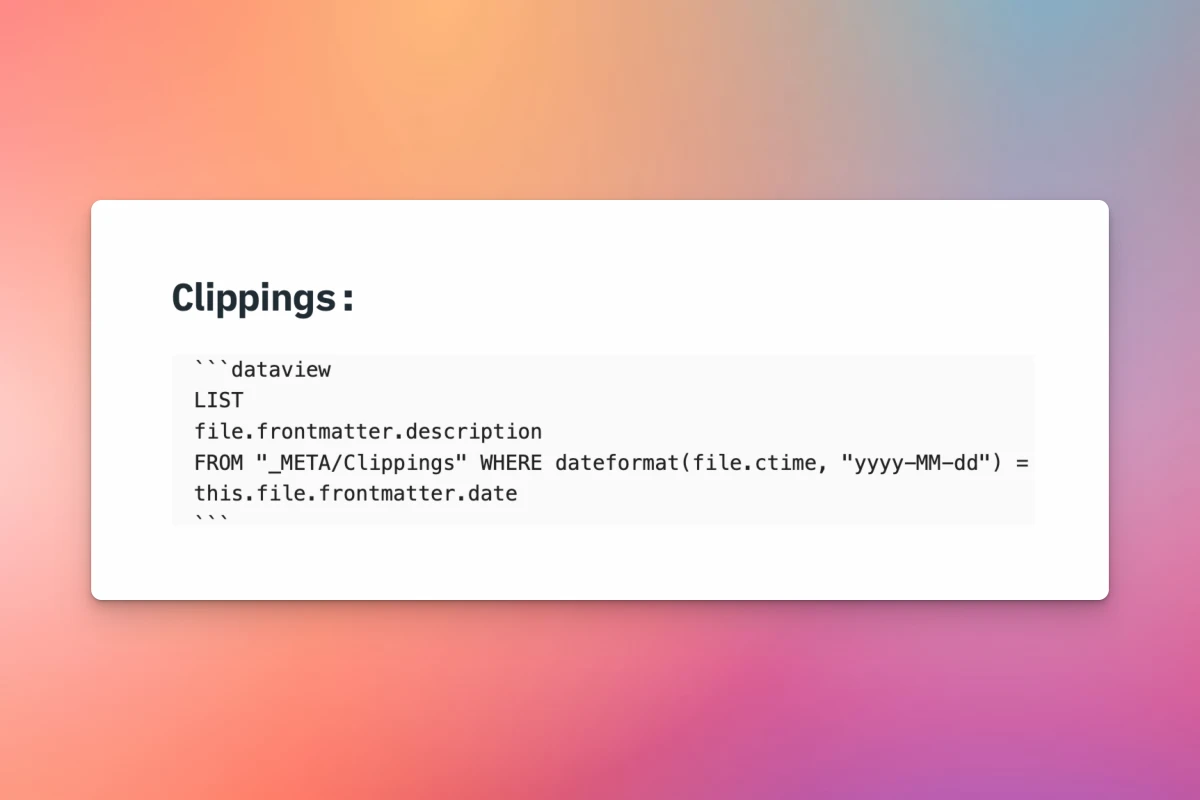
In my case, I go through all the clippings and select those that have the same date as the daily note. This gives me a list of all the clippings in the normal view:
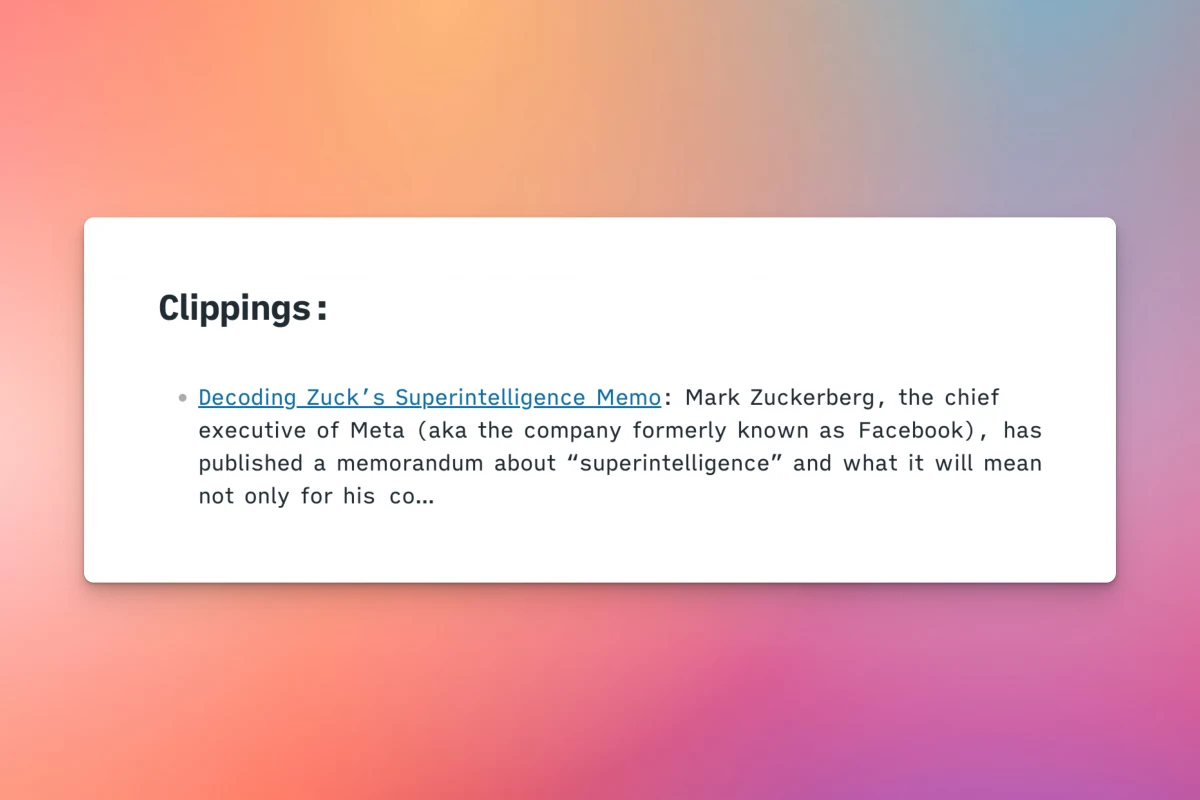
This then appears above my individual notes.
This gives me a very good overview of everything I've recorded on a given day, and I can decide whether I want to create more from individual clippings or notes—a blog post or a detailed note in the Zettelkasten.
I feel very comfortable with this setup. I can quickly jot down anything, and it's always saved as a note with just one click or keyboard shortcut. At the end of the day (or whenever), I have a solid overview and can figure out what to do with it.
As I said, this isn't a magical setup, but it serves its purpose very well. It supports me and it stays out of my way.
Write a comment